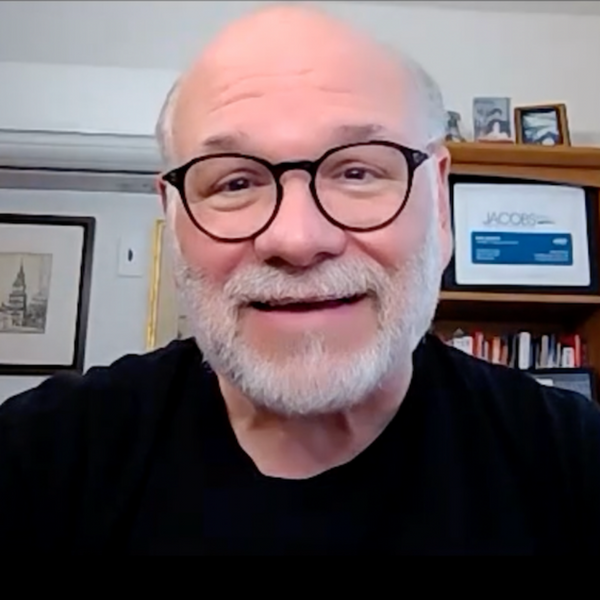Be a Lion: The Role of Courage in Leadership
By Ken Jacobs
November-December 2024
In October, I was honored to present a leadership session at PRSA’s ICON 2024 in Anaheim, Calif., on the role of courage in leadership.
I’ve been thinking about this topic for some time because, as a leadership coach to those in the PR and communications professions, I see how even formidable leaders struggle with confidence and courage. On a positive note, I’ve seen how when leaders embrace their “inner lion,” they become more effective leaders.
Of course, there are a number of definitions of leadership courage. And no, I’m not going to share the Merriam-Webster definition.
According to Forbes, it’s “the quality of mind or spirit that enables a person to face difficulty, danger, pain, without fear.”
I’m not sure I agree. I think it’s unrealistic to think any of us, even leaders, never experience fear.
Thrive Global says it’s “the mental or moral strength to venture, persevere, and withstand danger, fear or difficulty.” I think that one’s closer, because it acknowledges that leaders face and must withstand fear. I’m not sure that leaders face danger, per se, but we certainly face difficulty, in addition to fear.
Here’s my definition: “The ability to face danger, pain and do what needs to be done despite one’s fear… to do things that need to be done despite being frightened.
Why is courage so critical in leadership?
Quite simply, without courage, one cannot lead. Experts on human nature have known this for time immemorial. “Courage is the mother of all virtues because without it, you cannot consistently perform the others,” said Aristotle.
More recently, leadership coach Joanne Trotta of LeadersEdge, Inc., has said that leadership and courage are “inseparable qualities,” and I believe she’s right.
Matthew McCarthy, the CEO of Ben & Jerry’s, said, “Leadership and bravery, like mental fitness and employee well-being and productivity, are connected like a chain of the strongest steel.”
In other words, when it comes to courage and leadership, like the old lyric, “You can’t have one without the other.”
As I’ve been saying for years, your teams, your followers, are on high alert for your fear, but desperately want your courage. Courageous leaders are attractive, not as in physical beauty, but in that they attract followers.
Those of you who are Baby Boomers and GenXers may remember the toy “Wooly Willy,” where you’d use a magnetic “wand” to move iron fillings to create a beard, mustache, sideburns or hair on Willy’s head. Leaders who embrace their courage attract followers, like those iron filings were attracted to that wand.
Leaders who faced their fears
When we look at particularly courageous leaders throughout history, they all must have had fears.
From Gandi to the Reverend Dr. Martin Luther King, Jr., from Harriet Tubman to Malala, and so many other leaders, they walked through their fears to encourage their followers to embrace their courage and walk through their own fears.
As a result, they helped win independence from what was then the most powerful empire on earth, brought civil rights to millions, brought people from enslavement to freedom, and helped win education for girls and young women in Afghanistan.
So being a courageous leader isn’t about being fearless. As one of my heroes, Eleanor Roosevelt said, “You gain strength, courage and confidence by every experience in which you really stop to look fear in the face. You must do the thing which you think you cannot do.”
Rewiring our brains
If you do experience fear as a leader, then know that it’s not your fault. Humans are hard-wired for fear, rather than courage, and to avoid loss.
Cumulatively, leadership experts tell us we fear conflict, difficult conversations, taking risks, looking bad to our teams and failure. And I’ve found that some leaders fear success.
The good news is that we all can rewire our brains to lean into courage.
Here are some of the things courageous leaders do that I shared with ICON session attendees:
- Talk their truths, even when it’s uncomfortable, knowing that leadership is about embracing discomfort, knowing it will make their relationships and their organizations stronger.
- Take responsibility for their actions, and the consequences, knowing that if we want our people to be accountable, we must demonstrate that behavior with ourselves.
- Elevate others, acknowledging that as a leader you only succeed when your team members do, and your evaluation, review, and yes, compensation, should be tied to that.
- Walk the walk, remembering the Ralph Waldo Emerson quote, “What you do speaks so loudly I can’t hear what you’re saying.”
- Don’t fear what could go wrong, and instead think about “What could go right?” understanding that mindset shift is proven to drive personal and organizational success.
- Get it wrong sometimes, and fully expect that will be the case. This allows them to respond more positively when they hit bumps in the road and provide additional opportunity.
- Embrace discomfort, risk and “failure,” seeing failure merely as steps on the road to their ultimate success. Among the great leaders who’ve done so, from all industries, include Oprah, Edison, Einstein, Soichiro Honda, Ella Fitzgerald and Dolly Parton. (And oh, what a great dinner party that would be!)
- Transcend talk and demand action, in their teams and in themselves. Talk is cheap. All that matters is what you do. The good news is that when we give in to fear or worry, taking action can lift us into courage.
- Lead with integrity and authenticity, knowing that their reputation is everything, and that their followers are attracted to authentic leadership. As Doug Conant, former CEO, Nabisco, former Chairman, Avon Products said, “Have a tough mind on standards and a tender heart toward people.”



